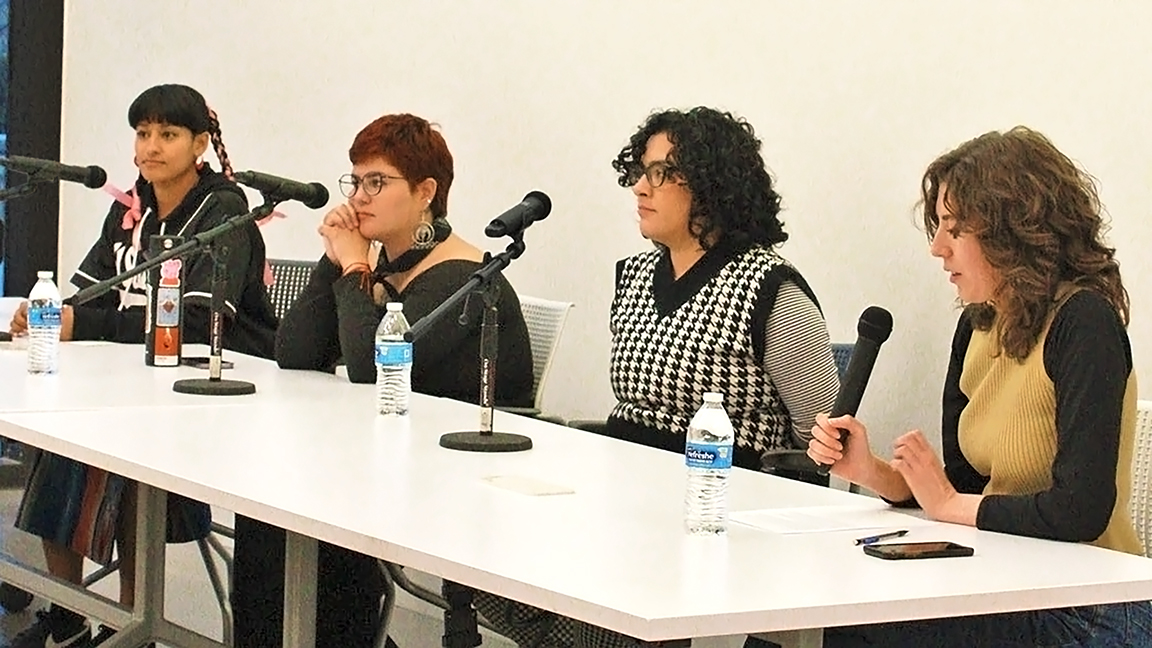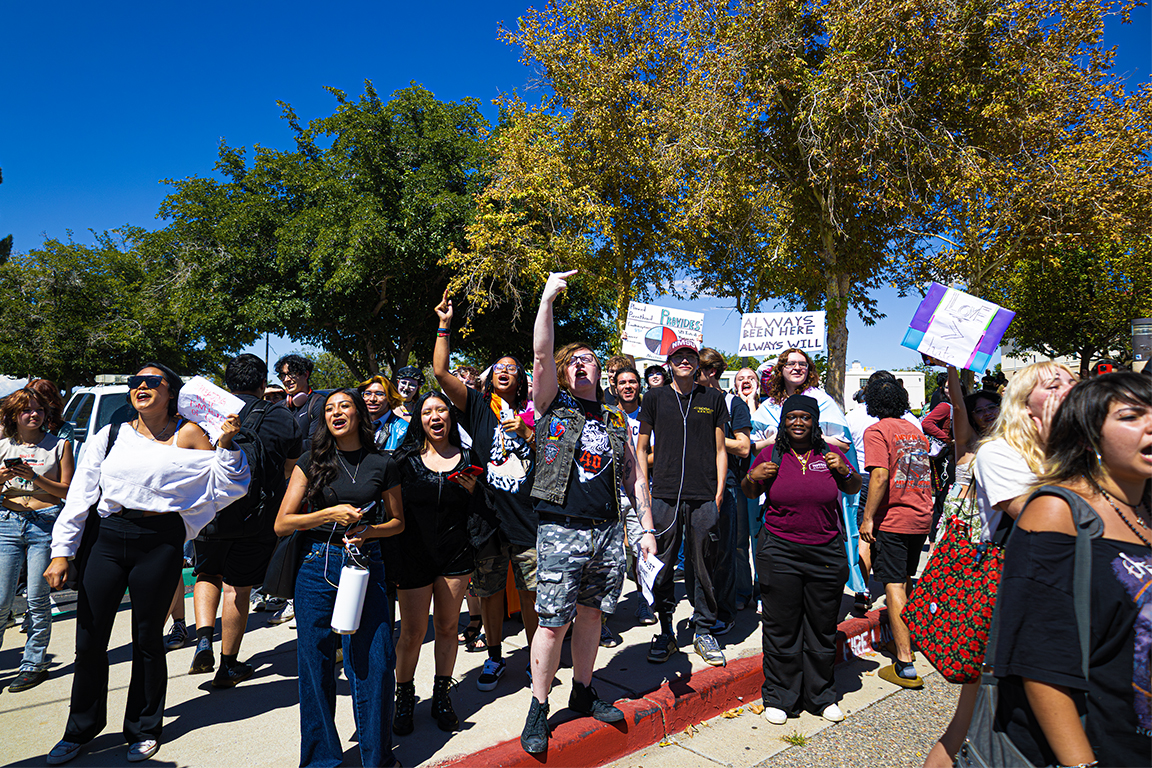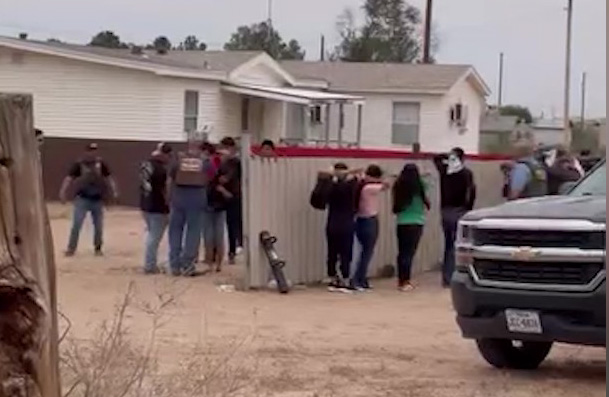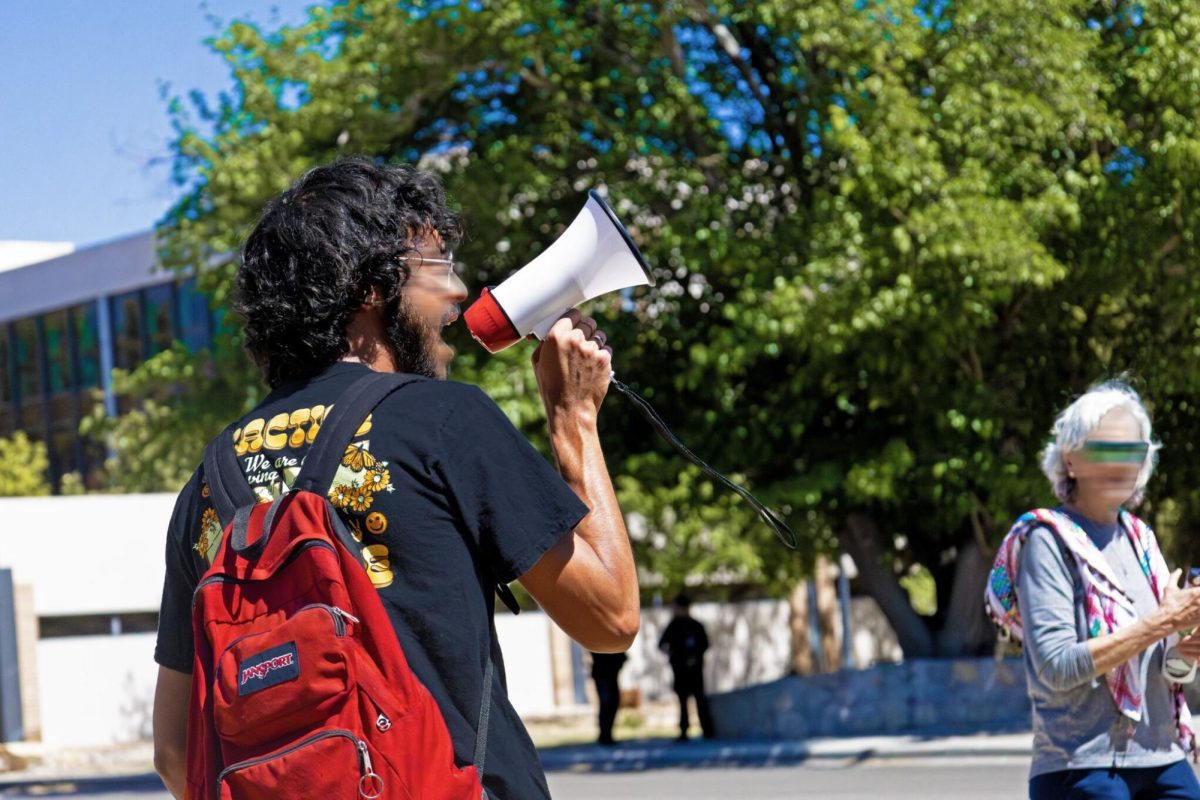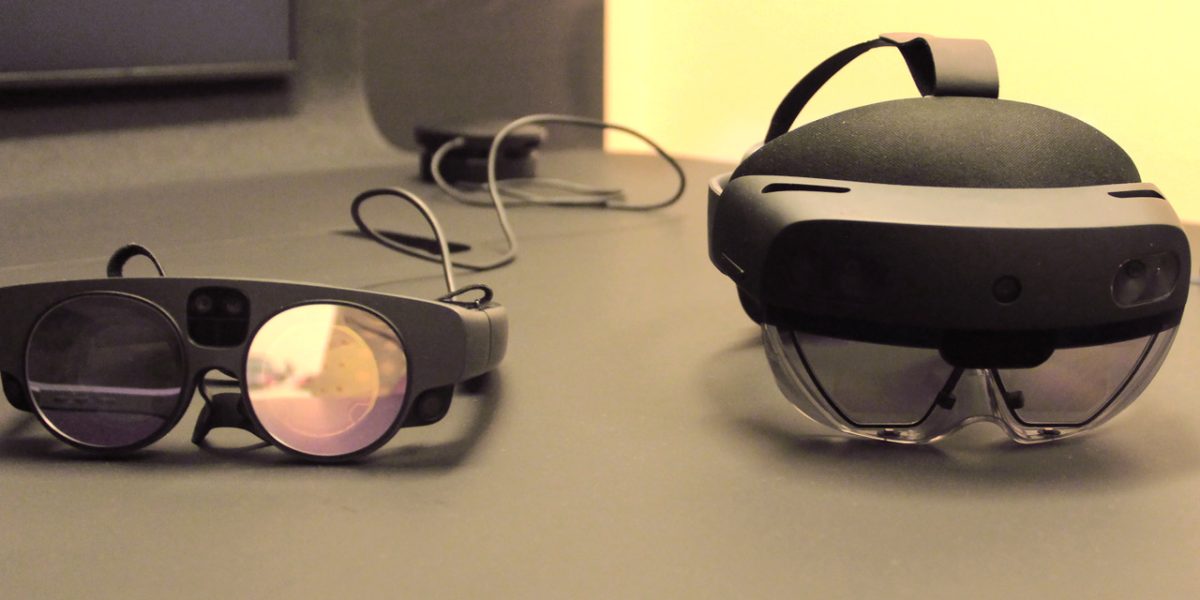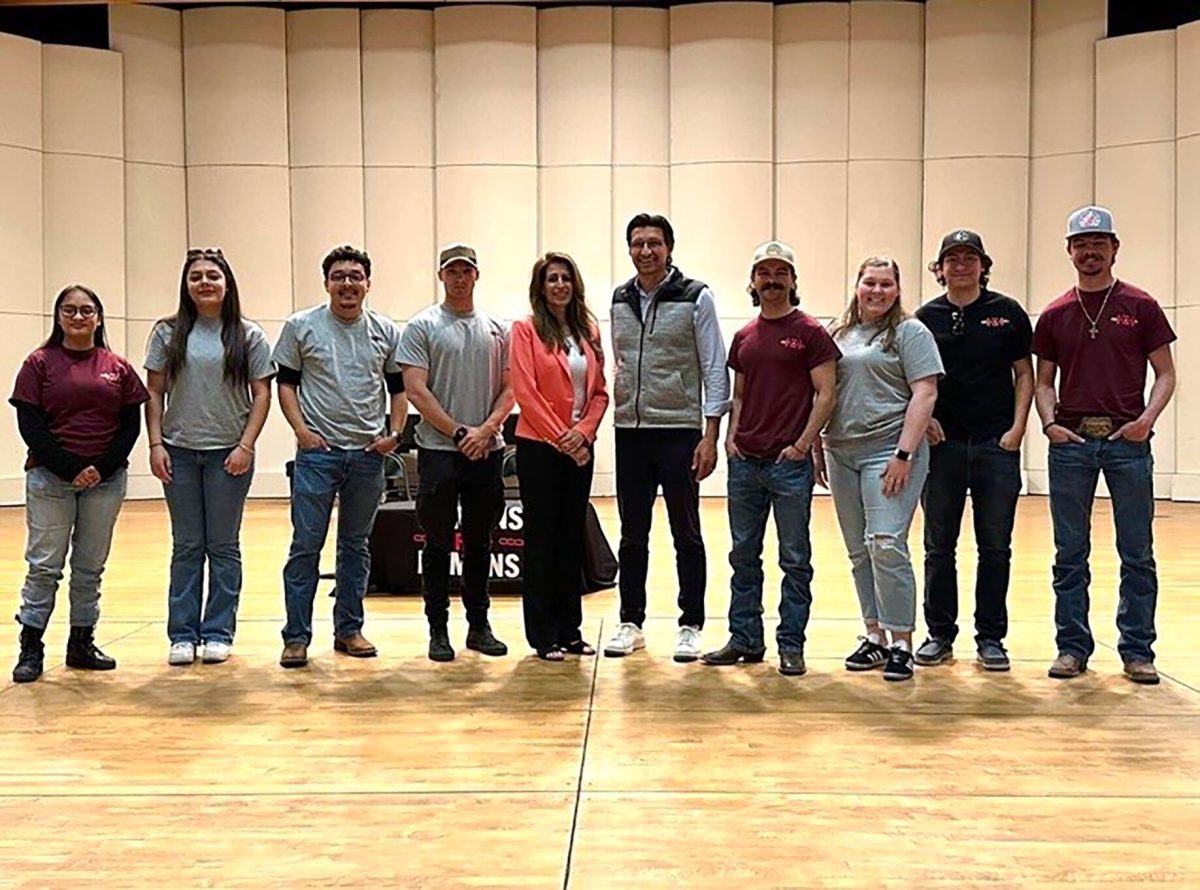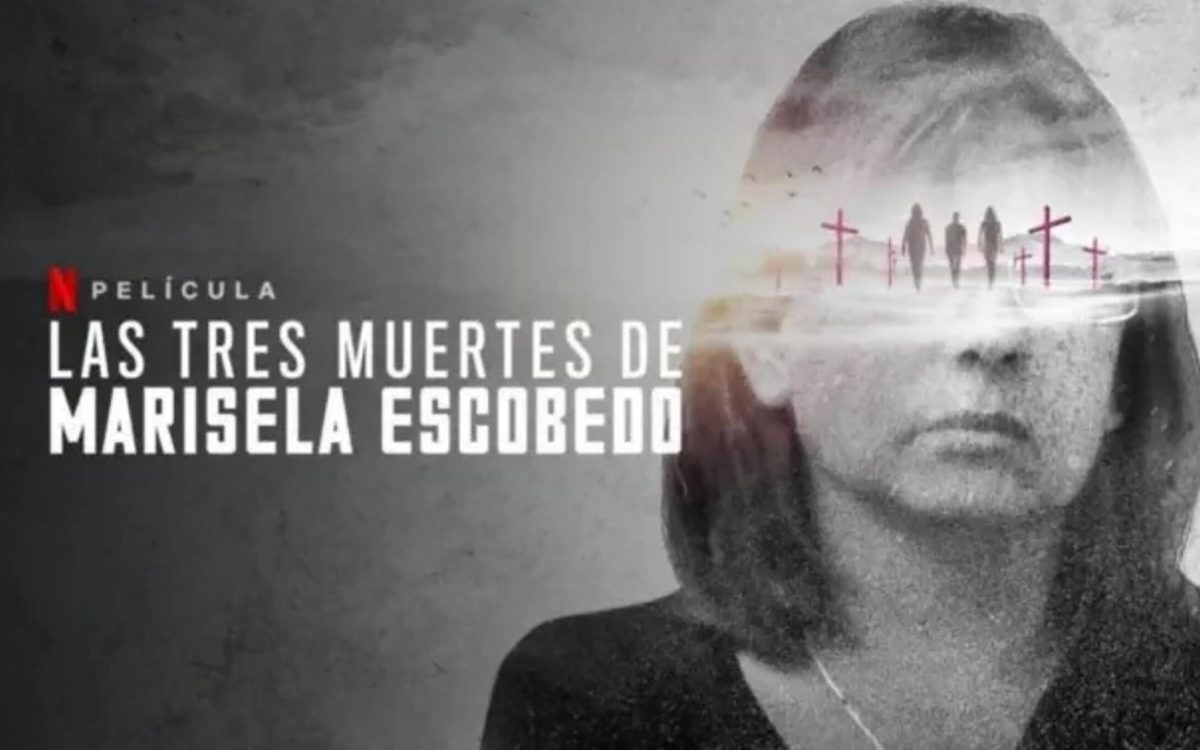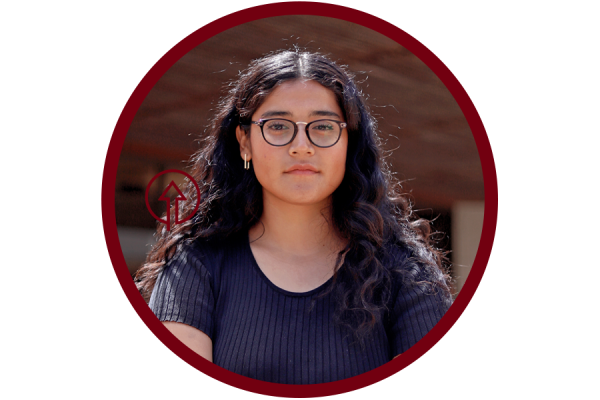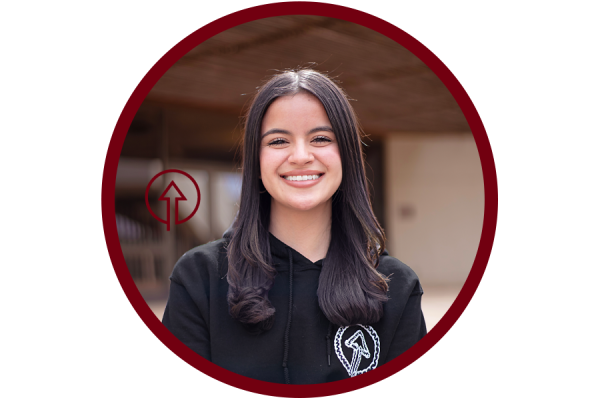The Art Museum hosted artists Bella Maria Varela, hazel batrezchavez and Pico del Hierro-Villa along with moderator Eva Gabriella Flynn for an open discussion on the bleachers of Devasthali Hall at 05:30 p.m. on Tuesday, Jan. 30.
The artists reflected on the ways their art explores the nuances of identity in the Borderplex region. One of the main topics they discussed was how the border shapes their identities and how they portray that through art.
“I carry the border with me wherever I go,” betrezchavez said.
They urged attendees to reflect on the romanticization of art in history and to take a deep dive through assimilation and colonization elements. Similarly, they stated that these topics are often overlooked yet very important for understanding one’s stance within the art scene.
“I want to be intentional with what I’m bringing to the table,” betrezchavez told attendees.
The artists also discussed the use of artwork to reconnect to their familial roots. Varela described how she uses photo and video archives to learn about her history.
“That’s what my work is trying to figure out,” Varela said, “It’s taking steps back into who I am. A lot of that is through archives.”
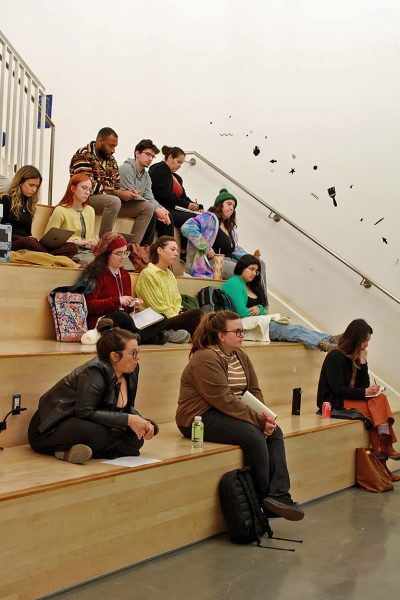
She emphasized how therapeutic it is to have complicated conversations with her family about queerness and her art style.
“It’s a family effort. They know when I come and visit that everyone is partaking in having those conversations,” Varela said. “I recently went on a trip with my mom where we had lots of conversations about queerness. Because of having those conversations with her, I feel like we have a really good relationship.”
Hierro-Villa highlighted the seriousness of not reproducing powers, and taking an ethical stance with how their work is performed.
“I really consciously work in a framework of making sure that I am not reproducing these sorts of powers but really making sure that I’m helping give voice to my community through a very ethical stance and giving them the opportunity to show themselves,” Hierro-Villa said.
Another topic the artists reflected on was the inclusion of black and indigenous people in conversations about Latinx art and culture.
“When I think about where my people are from, in El Salvador, we’re not in that category, right? Guatemala isn’t in that category or Belize,” betrezchavez said. “In those areas where there’s a high influx of black and indigenous individuals, [they] are left out of that narrative.”
The artists discussed the idea that borders can be more than just geopolitical. Borders can be imaginary, such as borders between genders, religions, or cultures. Artists such as betrezchavez, Hierro-Villa, and Varela explain how their art breaks those barriers.
“When you think about borders, you think about borders, you could think about geopolitical borders, but you could also think about social borders as well… and the gender binary, the religious binary.” Hierro-Villa said. “[Borders] exist in a lot of imaginary ways that affect our human lives… So how are we breaking the borders of religion? And the borders around how we see love?”
The artists agreed that figuring out their identity is a process of learning and unlearning. It is critical for underrepresented communities to understand the influence of ethical and transparent depictions of counternarratives, as explained by these artists.
Although they often collaborate, Bella Maria Varela, hazel batrez chavez and Pico del Hierro-Villa have forged their unique paths within the creative scene.
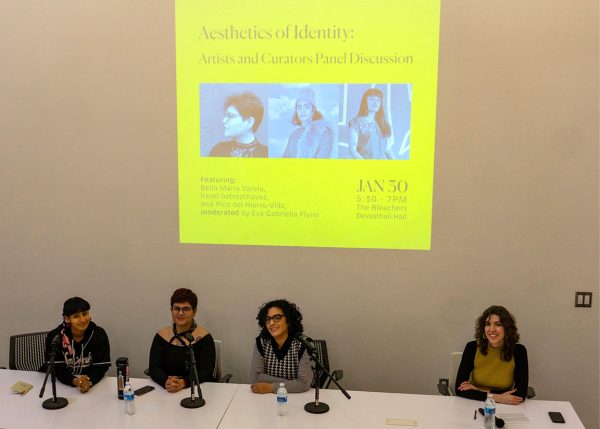
Varela is a fellow at the University of Texas at Austin, where she researches issues pertaining to the U.S.-Mexico border through a lens of pop culture analysis and queerness.
Batrezchavez works as an artist and educator in pueblos around the Albuquerque area. They recently started an experimental art space, Ni de Aquí, Ni de Allá, inside a cargo container.
Hierro-Villa is currently preparing for an art residence in Mexico City while waiting for a response to their PhD application. They plan to focus on academia to further expand the opportunities of the BIPOC scholars within the world of art.



